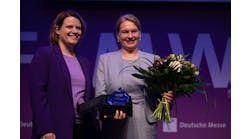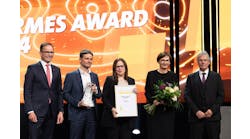- Field sensors used for monitoring, control, alarm, and shutdown.
- Wireless technology whose uses include real time field-to-business systems.
- Fluid processing, material processing, and discrete parts manufacturing.
The committee will address various aspects of wireless manufacturing and control systems technology, including the environment in which it is deployed, the technology life cycle, and applications. According to Manges, the new standards will “assure successful system deployment, help identify and address any vulnerabilities, and improve overall system performance by eliminating failure modes.”
In order to exploit emerging wireless opportunities to improve industrial systems, the ISA will collaborate with vendors, R&D communities, and end users on the project. Committee members will include representatives from 3e Technologies International, Adaptive Instruments, Apprion, BP America, CMC Associates, Emerson Process Management, Endress+Hauser, Exxonmobil Research & Engineering, Honeywell, Invensys I/A, Medida, Motorola Labs, Oak Ridge National Laboratory, Oceana Sensor, Omnex Control Systems, OPTI Canada, Shell, and Syncrude Canada. The cooperation of this diverse group will also assure that components are available to provide for successful deployment.
According to committee chair Ian Verhappen "The intent of SP100 is to provide our industry the practical information it requires to 'ensure' successful implementations of wireless systems in the automation environment." Verhappen says the committee hopes to proceed in fashion similar to ISA-99, and issue some Technical Reports in 2005 with the potential to make them into full Standards later. "Part of the reason for Technical Reports" says Verhappen, "is that they can be issued more quickly and updated as the technology continues to evolve."
Dr.Gregory Murphy, a 20-year industry veteran, committe member, and professor in the Electrical and Computer Engineering Department at the University of Alabama, said, "It's important we develop the standard so we can address the growing number of industrial control application issues. From network topologies to interoperabiblity with RFID and environmental conditions there are plenty of things to be concerned about." Murphy said wireless industrial control system networks represent the future of control. "It's the next generation of real-time control and I want to help lay the basic foundation for its future."
ISA's announcement explains that global short-, medium-, and long-term technology needs will be incorporated on a non-exclusive technology basis with no bias toward or against a particular wireless technology. The standards themselves may influence the allocation and use of resources and spectrum.
In working to assure confidence in, and the integrity of, wireless technology, and to provide criteria for implementation in manufacturing automation and control systems, the ISA-SP100 Committee recently launched four project teams. Each team’s goal is to develop documents that will help users make the right decision on industrial wireless implementations.
The first project team will develop an educational technical report that covers the basic concepts of radio transmission—the physics of radio. The report will cover free space communication of a transmitter and receiver under ideal conditions; address real earth propagation effects such as moving objects or multiple path communication; and deal with issues such as interference related to sharing the license-free band spectrum with others. This technical report will provide new users with a better understanding of the choices and tradeoffs offered with wireless applications in industrial environments. For more information on this activity or to volunteer, please contact Ake Severinson, (800) 663-8806.
To address the many levels of industrial environments, ranging from the benign to the extremely harsh, the second project team will develop an industrial wireless requirements document. Based on a USDoE-funded program involving Eaton, General Electric, and Honeywell that collected data on customer wireless requirements, this document will cover wireless applications, such as monitoring and control, and will develop a taxonomy of wireless automation networks. The team’s objective is to provide end users with a better feel for where their application fits in the overall industrial environment hierarchy. For more information on this activity or to volunteer, please contact Tom Phinney, (602) 313-5989.
The third project team will develop a technical report that covers interoperability issues and how sensor networks should interact in an industrial environment. While some of these issues will be addressed in the requirements document, this report will examine co-existence and performance in greater depth. Work is currently underway within this project team to develop a matrix identifying levels of interoperability and providing the rationale for their use. For more information on this activity or to volunteer, please contact Bill Drake, (301) 944-1300, or Peter Fuhr, (831) 588-7558.
The fourth project team will create a "User Guide," providing sufficient guidance to allow users to deploy and use wireless networks in an industrial environment. The guide is intended to be comprehensive, not only helping users achieve a wireless solution but also assisting them in making the right decision on their wireless implementation through tools such as a "buyers' checklist." For more information on this activity or to volunteer, please contact Wayne Manges, (865) 574-8529, or Anoop Mathur, (612) 951-7734.
For further information about ISA-SP100, including the complete scope and purpose, as well as a list of committee members, visit www.isa.org/community/SP100. For information on other ISA standards committees, visit www.isa.org/standardscommittees.




